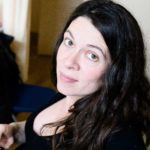Link to Pubmed [PMID] – 26298793
Sleep Med. 2015 Sep;16(9):1151-5
BACKGROUND: Restless legs syndrome (RLS) is a common disorder, with several known genetic risk factors, yet the actual genetic causes are unclear.
METHODS: Whole-exome sequencing (WES) was performed in seven RLS families, focusing on six known genetic loci: MEIS1, BTBD9, PTPRD, MAP2K5/SKOR1, TOX3, and rs6747972. Genotyping using specific TaqMan assays was performed in two case-control cohorts (627 patients and 410 controls), and in a familial cohort (n = 718).
RESULTS: WES identified two candidate GLO1 variants (within the BTBD9 locus), p.E111A and the promoter variant c.-7C>T, both co-segregated with the disease in four families. The GLO1 p.E111A variant was associated with RLS in the French-Canadian cohort (odds ratio, OR = 1.38, p = 0.02), and demonstrated a similar trend in the US cohort (OR = 1.26, p = 0.09, combined analysis OR = 1.28, p = 0.009). However, the original genome-wide association study (GWAS) marker, BTBD9 rs9357271, had stronger association with RLS (OR = 1.84, p = 0.0003). Conditional haplotype analysis, controlling for the effect of the BTBD9 variant rs9357271, demonstrated that the association of GLO1 p.E111A turned insignificant (p = 0.54). In the familial cohort, the two GLO1 variants were not associated with RLS. Other variants in the SKOR1 (p.W200R and p.A672V) and PTPRD (p.R995C, p.Q447E, p.T781A, p.Q447E, and c.551-4C > G) genes, did not co-segregate with the disease.
CONCLUSIONS: The GLO1 variations studied here are not the source of association of the BTBD9 locus with RLS. It is likely that the genetic variants affecting RLS susceptibility are located in regulatory regions.
